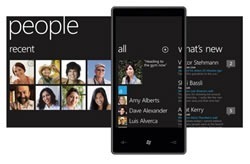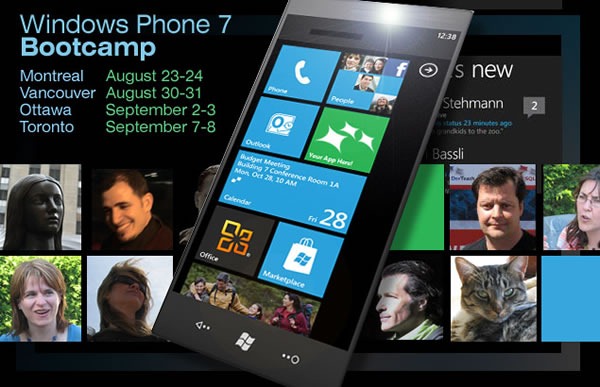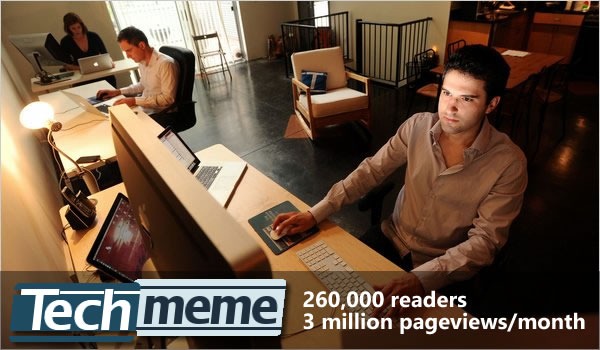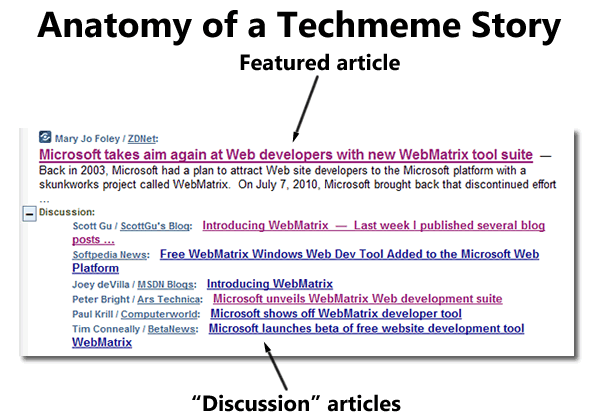 You’ve seen the announcement and perhaps you’ve downloaded the beta of the Windows Phone 7 dev tools (if you haven’t, do it now!)
You’ve seen the announcement and perhaps you’ve downloaded the beta of the Windows Phone 7 dev tools (if you haven’t, do it now!)
Now that you’ve got the tools, what’s next? Will they just lie there, dormant on your hard drive, or are you going to use them and be a trailblazer on a brand new mobile platform?
If you’re looking for intense training with personal attention by a highly-rated presenter with Silverlight and cloud development expertise, you’ll want to check out DevTeach’s Windows Phone 7 Bootcamps. They’re being presented by Colin Melia, who’s presented at TechDays, wrote the Silverlight demo app that we used for the EnergizeIT tour and is one of our go-to guys for Windows Azure – simply put, the guy knows his stuff.
 The Windows Phone 7 Bootcamps are serious courses – two full days of in-class hands-on training in which Colin will explain the Windows Phone 7 platform and especially Silverlight as it runs on Windows Phone, with all the details on Silverlight programming techniques, controls, templates, styling, resources, animation, data binding, navigation, interfaces and all those things you need to know about to build a mobile app. The course will mostly cover the Silverlight side of Windows Phone development, although there will be a section on game development with XNA.
The Windows Phone 7 Bootcamps are serious courses – two full days of in-class hands-on training in which Colin will explain the Windows Phone 7 platform and especially Silverlight as it runs on Windows Phone, with all the details on Silverlight programming techniques, controls, templates, styling, resources, animation, data binding, navigation, interfaces and all those things you need to know about to build a mobile app. The course will mostly cover the Silverlight side of Windows Phone development, although there will be a section on game development with XNA.
If you’re a busy developer who’s having trouble setting aside time to learn all those separate bits that go into Windows Phone development – Silverlight, calling on web services, the Windows Phone-specific APIs, using information for sensors such as GPS and accelerometers and dealing with the constraints of mobile devices – this course is well worth the money. It’ll give you the kick start you start writing apps and capitalize on the wide-open marketplace of Windows Phone apps.
 The bootcamps take place in the following cities on the following dates:
The bootcamps take place in the following cities on the following dates:
- Montreal: Monday, August 23 and Tuesday, August 24 at the Microsoft office
- Vancouver: Monday, August 30 and Tuesday, August 31 at the Sutton Place Hotel
- Ottawa: Thursday, September 2 and Friday, September 3 at the Microsoft office
- Toronto: Tuesday, September 7 and Wednesday, September 8 at Microsoft’s downtown office
The registration fee is CDN$999 for the full-day training session, and you can save $100 by using the discount code WP7BOOTCAMP when you register. I repeat:

For the full details on the Windows Phone 7 Bootcamp, see the Windows Phone 7 Bootcamp page.









